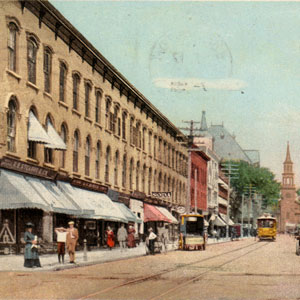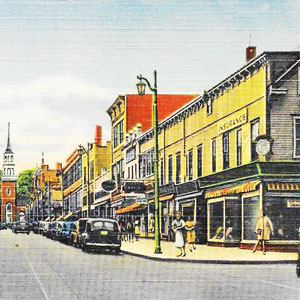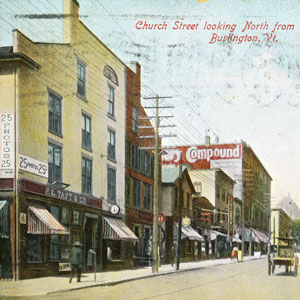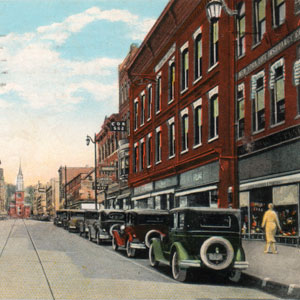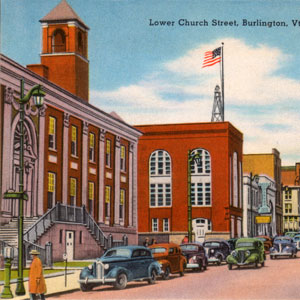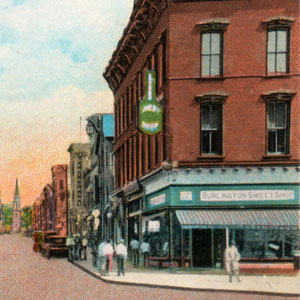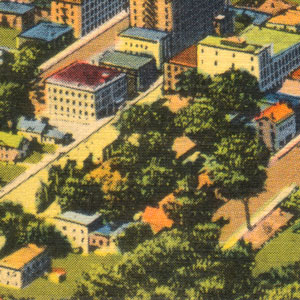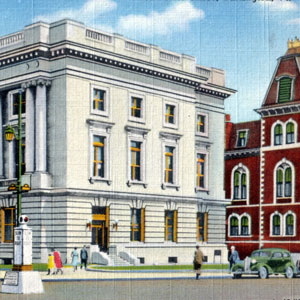About Historic Church Street Blocks
Although we know that Native Americans lived here long before Europeans arrived, this exploration into the history of the central blocks along Church Street in Burlington, Vermont starts around the time of the American Revolutionary War. Even though Burlington was chartered in 1763 and shipbuilding was being done here on Lake Champlain in the 1770s, the town was not officially organized until 1786.
The first buildings in the community were mainly built on the waterfront, along Pearl Street to the hill near the University of Vermont and by the mills at Winooski Falls. But with the establishment of the county court house near today’s City Hall Park, the street “between the courthouse and the church” became a favorite way to go between these settlements by the early 1800s.
By this time, Church Street was well on its way to become the civic and commercial hub of Burlington, Vermont. Soon canals connecting Lake Champlain to the Hudson River and New York City to the south and to the St. Lawrence River and Canada to the north enabled Burlington to become Vermont's primary mercantile center with wholesale and retail goods from around the world passing through this inland port in route to northern Vermont.
With the arrival of the steam-powered railroads, the telegraph and other new technologies by the mid-1800s, Burlington grew as a business hub with banks, offices and shops centered along Church Street, as well as a manufacturing hub with lumber and wood products mills along the waterfront and textile mills at Winooski Falls and as a residential community with a growing population. And so by the time Burlington was incorporated as a city in 1865, it had the largest population of any community in the state, a distinction that it holds to this day that is reinforced by its longstanding role as an academic center.
Church Street’s location within walking distance of the University of Vermont and Champlain College campuses, as well as from the Old North End, South End and Hill Section residential areas and nearby hotels continues to welcome students, residents and visitors throughout the year. Indeed as a vehicle-free space since 1981, the center area of the Church Street Marketplace caters to pedestrians by day and night with a lively array of shops, services and dining venues.
Through many notable preservation efforts the retention of the historic character of this memorable promenade has undoubtedly contributed to its international fame, but the significance of Burlington's Church Street also has been recognized by listings on the National Register of Historic Places.
To help broaden the public's understanding of how this popular historic place has changed over the many decades, this research project was conducted by students in the University of Vermont Historic Preservation Program's HP 206 Researching Historic Structures and Sites course taught by Professor Thomas Visser during the fall 2018 semester as part of the ongoing Historic Burlington Project.
With each student taking reponsibility for researching the history of a separate area, their findings presented here were generously supported by information and images shared by Special Collections at the University of Vermont Library, Special Collections at Champlain College, the Fletcher Free Library, the Burlington Planning and Zoning Department, Preservation Burlington, the Preservation Trust of Vermont, the Vermont Historical Society and the Vermont Division for Historic Preservation.
|
|

